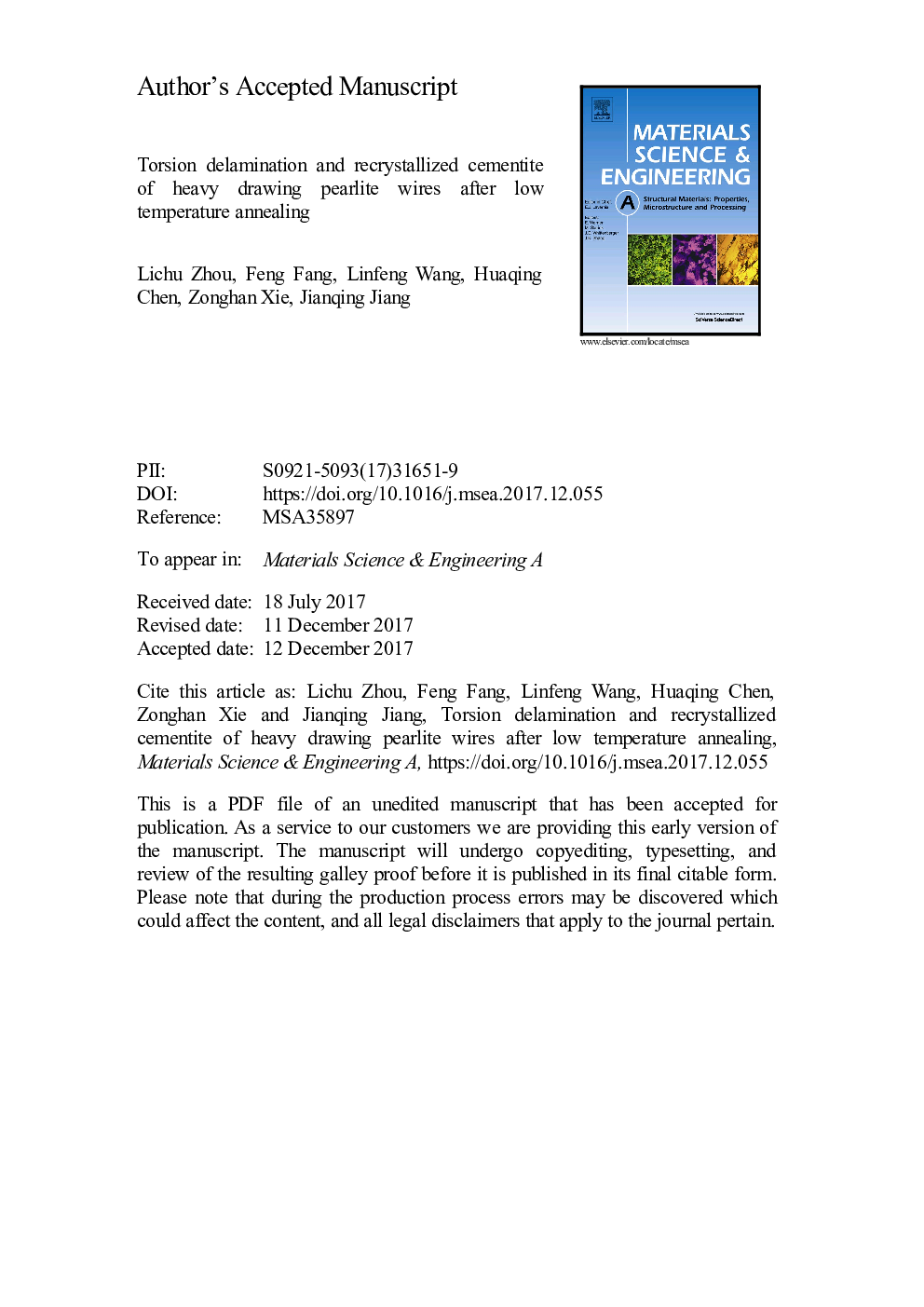| Article ID | Journal | Published Year | Pages | File Type |
|---|---|---|---|---|
| 7973706 | Materials Science and Engineering: A | 2018 | 21 Pages |
Abstract
Relationship between torsion delamination and cementite recrystallization in heavily cold drawn pearlitic steel wires was investigated following low temperature annealing. It was found that torsion delamination occurred inevitably when the wires underwent annealing at temperatures ranging from 210Â â to 350Â â with duration from 2Â min to 60Â min. The torsion angle corresponding to uniform torsional deformation of annealed wires was dropped to about 10% as compared to the as-drawn wires. The torsional tolerance is independent of tensile mechanical properties when subjected to annealing treatment. Low temperature annealing didn't alter the morphology of cementite in the wires, but instead it changed cementite structure from disordered (i.e., near amorphous) to nano-crystalline state. After low temperature annealing, dislocation cells formed in ferrite during torsion tests. The recrystallized cementite impeded dislocation motion and was found to break up around high-density dislocation zones. Micro-cracks resulting from torsion delamination were observed near damaged cementite sites. By contrast, in as-drawn steel wires cementite and ferrite deformed in a coherent and coordinated manner. In doing so, the wires exhibited a greater tolerance to torsion damage.
Related Topics
Physical Sciences and Engineering
Materials Science
Materials Science (General)
Authors
Lichu Zhou, Feng Fang, Linfeng Wang, Huaqing Chen, Zonghan Xie, Jianqing Jiang,
